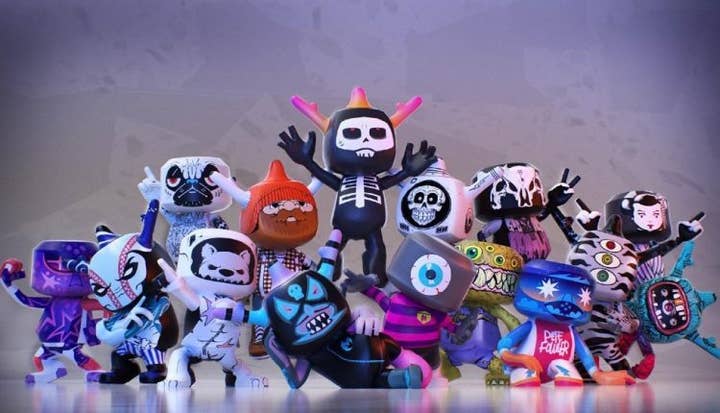Six ways to make your user-generated content game successful and lawsuit-free
Mythical Games' Jamie Jackson detailed the dos and don'ts of user-generated content in a Devcom talk this week
Games based on user-generated content have come a long way in the last few years, with more and more titles now being built from the ground up as a canvas for players to unleash their imagination.
Of course, Minecraft and Roblox have been around for over a decade, and the mod scene has been thriving since the 90s. But things have now got more complex. A simple look at projects such as Media Molecule's Dreams shows how far we've come in giving players control over development tools, letting them experiment and create gameplay.
Even companies traditionally conservative with their IPs, such as Nintendo, have given it a shot, leading to some great successes such as Super Mario Maker. But building such games brings a wealth of challenges for developers, from moderation to accessibility.
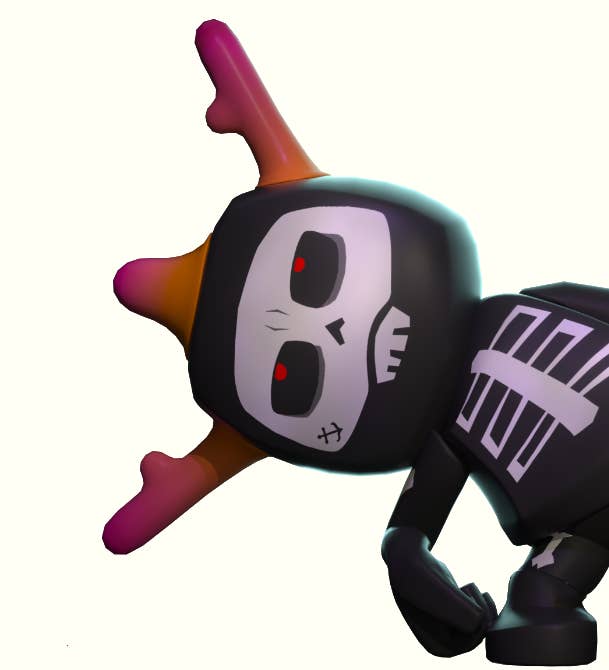
Jamie Jackson, co-founder and CCO at Mythical Games, addressed some of these challenges in a Devcom talk earlier this week, giving advice on the dos and don'ts of user-generated content.
Mythical Games is currently working on Blankos Block Party, an MMO that revolves around digital collectible toys called Blankos. They are, as Jackson put it, "toys come to life."
"When we leave the room, where do [toys] go? In our game they go to a place called The Junction," he explained. "It's this social hangout where players can meet up with their friends. But another big part of our game is the user-generated content. We wanted to build something where players could create their own block parties, and invite other players to come and play with them."
The idea for Blankos Block Party -- which is currently in alpha -- stems from Mythical Games' creation, with Jackson and co-founders John Linden and Rudy Koch all wanting to focus on blockchain technology and allow players to own their digital assets.
"We wanted to change the way people look at digital ownership, and actually give true digital ownership to players, and allow them to do whatever they want with the things they own," Jackson said.
"We wanted to build a place that encourages creation and rewards it"
Jackson has a wealth of experience working with user-generated content, most notably from his time as creative director at FreeStyle Games, developing titles such as DJ Hero and Guitar Hero Live. And he's witnessed how players will always engage with games in ways you don't expect.
"You see it all the time: players, especially in MMOs, come together and do things in the game that you just didn't expect as a developer. And it's really fun and that's something that stuck with me. So when we started to build Blankos and we wanted to have an element of UGC, we were like: how do we do it, how do we create tools to allow players -- anyone -- to create, and how do we not limit them? We wanted to build a place that encourages creation and rewards it."
So how do you approach user-generated content and integrate it seamlessly in a game?

1. No rules
Jackson detailed key aspects of building a game around UGC for developers who might be tempted by the adventure. And while it's important to prevent offensive content from being created, having as little constraints as possible is also key to success.
"Our only rule really is: no penises! One, and you're out. No offensive content"
"For us, number one is: no rules," he said. "Let players put things wherever they want it. Let them intersect, let them rotate. You want to put [a tree] upside down and use it as a platform? Cool, let's do that. Just create no rules.
"Our only rule is: no penises! As soon as people are gonna do any of that stuff, we have a pretty hard line. One, and you're out. No offensive content. So for that you need to build tools in there for players to report and communicate that stuff."
2. Build simple controls to allow complex solutions
Accessibility is a key aspect of user-generated content. You could have the best in-game tools for people to play around with, but if the way to use these tools is not user-friendly, they're not going to use them.
"Everything needs to be done with the game controller," Jackson said. "Even though Blankos is coming to PC first, we will be on consoles later down the line. Everything has to be done with the game controller, [because] that's the simple input that pretty much everyone can wrap their head around.
"So simple controls that allow for complex solutions is really important, and the complex solutions really come from creating a bunch of assets that your players can use, to create whatever they want to do, their imagination basically being the part that gets them to that complex solution."
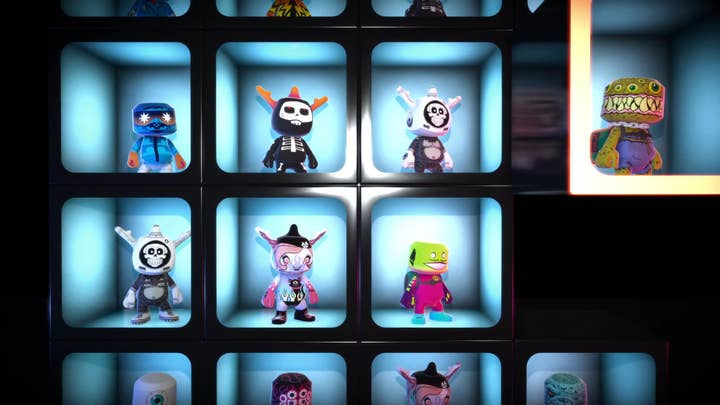
3. Avoid IP conflict
Games built around user-generated content have a long history of being sued by other studios for using their IP. Earlier this year, Nintendo pressed Sony to remove Mario creations from Dreams. But the issue is as old as user-generated content itself, with a similar issue happening with LittleBigPlanet as far back as 2008.
Avoiding IP conflict is critical to a sandbox game's success, so Mythical Games had to come with a way to circumvent that.
"One of the ways we've come about avoiding IP conflict is we create every asset in the game," Jackson said. "So we're not allowing players to import, sculpt or design their own assets.
"They can create out of the assets that we deliver. And maybe they can build something that looks like something else, but it's going to be a lot harder than them being able to literally build Batman or Superman or Mario, and just put it in the game. So that's one of the rules we set ourselves at the beginning."
4. Don't scare your players away from being creators
Another of Mythical Games' rules for working with user-generated content ties back to the accessibility issue. You need to make sure you've built a platform that really encourages players to become creators. Them having to learn how to code for instance could be a big obstacle.
"Don't scare your players away from being creators," he said. "And I think you can [encourage them] in a lot of different ways. Again, make it really easy for players to get in and place objects, and build. Find really interesting, simple ways to play.
"We wanted to keep it super simple. Slider bars, ON switches -- that was as far as we wanted to go with it"
"We made a decision early on that we weren't going to have pop-up boxes jumping up and down everywhere in the game that could intimidate people -- whatever that was, whether you had to type some code or anything like that. We wanted to keep it super simple. Slider bars, ON switches -- that was as far as we wanted to go with it."
In addition to being able to create in simple ways, players also need to easily implement some logic into their creations.
"How do you give them tools to create 'when' conditions, or competition, without having to have them build leaderboards or anything like that? Having a game that can take care of all that for them is really important.
"And another thing we're doing is we think of everything as a toy that goes into our game. And each of those toys can work with anything else. So whether you throw one of our 'fun guns' in there, but you also want to do a platform race, so you drop that toy in, they can work together. As you set up those game rules, the game handles all the back end stuff for you, all the conditions and leaderboards."
5. Define a clear style
Most sandbox games have a very clear style to start with. Minecraft has its iconic blocks, Roblox has its colourful, Lego-like characters. Dreams may be the exception to the rule, as you're only limited by your own abilities there.
But Jackson believes it's important to give players a style to play with, a solid basis they can build upon, rather than leaving them with a blank canvas.
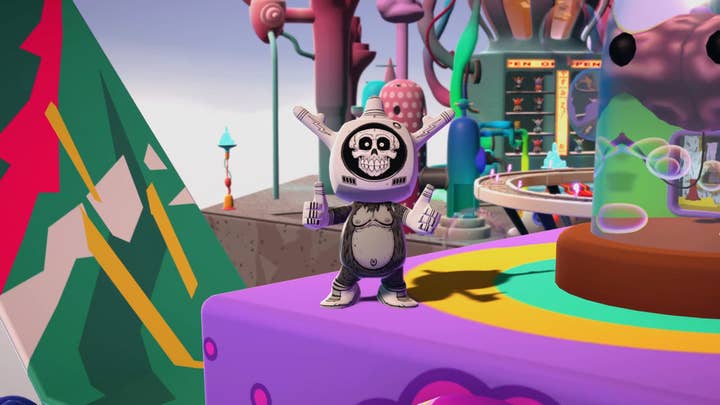
"I think style is important for UGC, I think you can be brave and define your style, or at least create a style that gives players something fun to play around with," he said. "We really decided early on [that] we were going to really define our style, that we were going to pick a path and believe in it.
"And the UGC, the toys, and the building blocks that go into that, are going to be inspired by this world that we've created. And then players are gonna be able to build and play and do interesting things within that style. But it gives a start point.
"I think if you leave a canvas too bare, it can be intimidating. A lot of people will often say the hardest part of creating a piece of art is starting it. When you look at a blank canvas and you get that paralysis of: where do I put my first stroke? What do I even do? That can be really tough."
"I think if you leave a canvas too bare, it can be intimidating. The hardest part of creating a piece of art is starting it"
Having a strongly defined style helps kickstart creation, but as long as players can then feel free to make whatever they want with it.
"If they want to take that style and turn it on its head by using everything we've created to create something different, or create something we didn't expect -- which will happen -- then that's cool.
"We want to build for that, we want to allow for that. A big part of UGC is thinking about what your destination is at the beginning, and not having too many things get in the way of preventing you from starting."
Jackson shared an example of one of the early levels that someone built in Blankos Block Party to illustrate his point, which you can see below.
"I think there may be eight or nine assets total in this," he said. "The blue that they've used to represent the water are actually seats from a festival pack that we did. The bridge is a fence post just repeated multiple times in different ways. And then it's got the rocks on the side, most of which have been turned upside down, so you've got the flat base there for them to create some fun platforming."
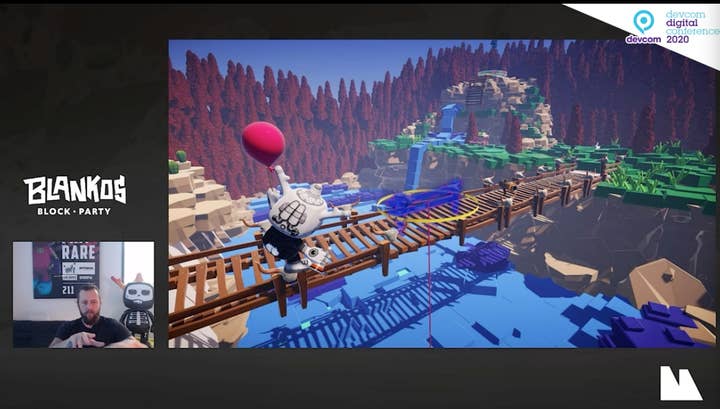
6. Cultivate your community
It goes without saying that games based on user-generated content can't succeed without a strong community. So taking the time to build that community, and nurture it, is primordial. For Mythical Games, that included building a feedback system that focuses on positivity rather than negative comments.
"Be ready to think about your community and create rewards for all players," Jackson said. "So, again, creating reasons for everyone to want to be a creator is really important. And that can be in your reward structure, and how you reward people.
"Allowing for players to give each other props I think is really important. My nan always used to say: 'If you haven't got anything nice to say, then don't say anything at all.' And I think that's very true. So in our feedback system to players, you can do a thumbs up or you can use a smiley face.
"Creating reasons for everyone to want to be a creator is really important"
"It's not about trying to create places for them to give each other negative feedback, but feedback where the creator can get a sense of joy from seeing how many people have also got some joy [from their creation]. I think that's really important."
You also need to factor in ways for players to share their content on social networks, as your game will only be able to shine if creations within it can be shown to the public.
"Creating interesting ways for players to share is super important," Jackson continued. "Especially today when you look at things like Twitch and other ways creators are directly talking to their players, their friends, their followers.
"We live in the world of the streamer, of the YouTuber. People create, and people put content out there for other people to consume. Content creators are king. What they do, how they play with our games, how they present our games to other people, is really important."
Finally, make sure you're prepared to act quickly on your community's feedback.
"Listen and act. We see this as a marathon, not a sprint. So once we launch, we're gonna have a bunch of different toys in the game. We have plans for more, but as that community grows, as we start to listen to what they want, we want to be ready to act on that. So we've built a pipeline to be very agile to be able to deliver some of those things -- hopefully quickly, as we hear them.
"But more than anything, get ready to be blown away by what your players create. We've seen this anecdotally, even internally, as friends have come in and played the game. Things have been built that we just didn't expect, which was great. As we brought in a small community of builders, seeing them play with the tools and build with them was super interesting."
